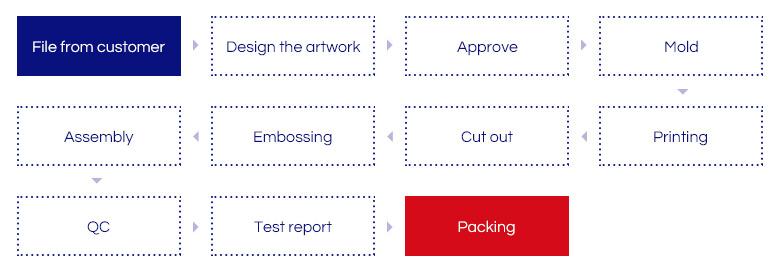A membrane switch is a printed electronic circuit that uses pressure to open and close a circuit. The membrane switch circuitry is most often screen printed using conductive inks, which are typically made of silver, carbon, and/or graphite.
Membrane switches are part of a range of devices considered to be user interfaces (also called operator interfaces, or man-machine interfaces) along with display-based touch screens, and mechanical switches such as push-button, toggle, rocker, and slide switches. The ultimate purpose of a membrane switch is to serve as the interface between man and machine, enabling an operator to communicate with a piece of equipment, instrument, or machinery.
- Completely sealed surface – easily cleaned and sterilized.
- Low Profile – no crevices that can trap contaminants.
- A cost-effective alternative – less costly than rubber keypad.
- Assemblies and capacitive touch keypads.
- Thin profile – saves valuable space in your product design.
- Easy to interface with existing controllers – no special electronics required, as with touch screens.
- Versatile graphic interface – overlays can be screen or digitally printed with stunning, photo-quality graphics effects.
- Protection by design – Easier to protect from UV radiation than rubber keypads.
- Water-resistant designs – meets NEMA 4 and IP 67 specifications.











